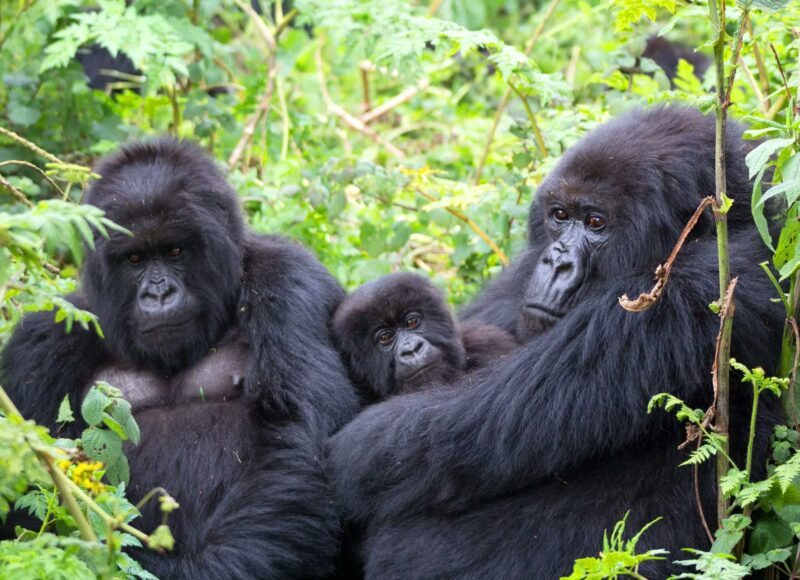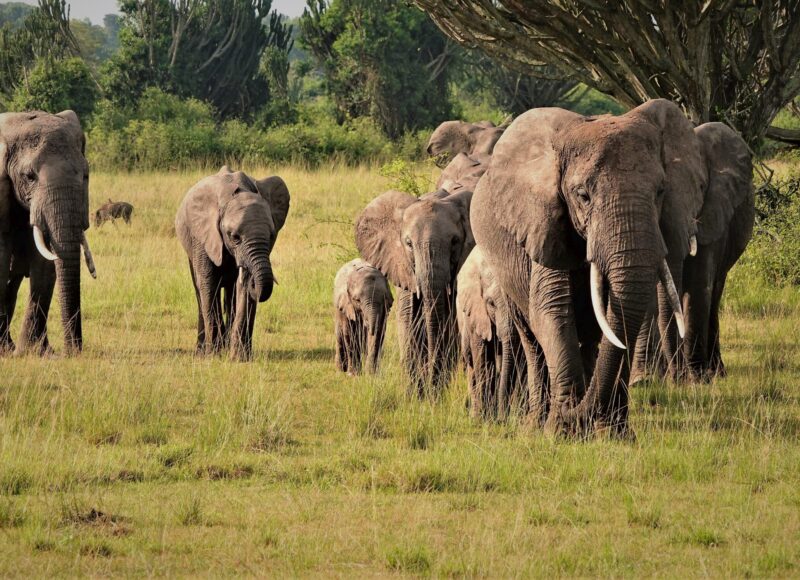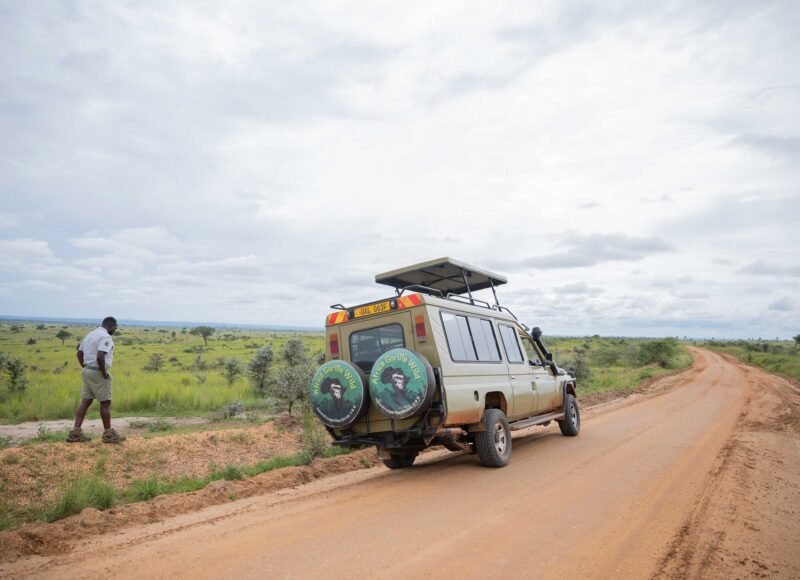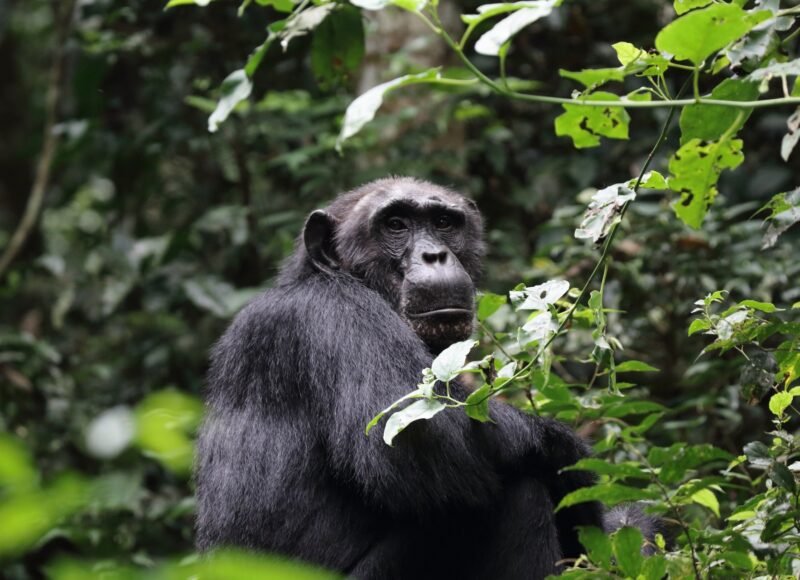Great Wildlife Migration in Kenya and Tanzania
The Great Wildlife Migration in Kenya and Tanzania stands as one of the most remarkable natural phenomena on Earth. This annual spectacle involves millions of wildebeest, zebras, and other herbivores moving across the Serengeti-Mara ecosystem in a relentless pursuit of fresh grazing lands and water. As one of nature’s most dramatic survival stories, the Great Wildlife Migration in Kenya and Tanzania offers unparalleled opportunities for wildlife enthusiasts and photographers to witness raw, untamed beauty. Guided by Africa Gorilla Wild, this in-depth exploration sheds light on the intricacies of the migration, its ecological significance, and the best ways to experience it.
Popular Africa Gorilla Wild Safaris
Browse through our most Popular Africa Gorilla Trekking Safari 2025, 2026
8 Days Amazing Gorillas of Uganda Safaris
Combine visiting the endangered mountain gorillas with game safaris, boat cruise on the Kazinga Channel and an encounter with the chimpanzee all in one safari.
$ 3,863
12 Days Uganda Gorilla Classic Safaris
A combination of Gorillas, Chimpanzee, Game, Safari walks, boat cruises and community encounters to give you an ultimate safari experience in the Pearl of Africa.
$ 4,657
15 Days Uganda Classic Holiday
Explore Uganda’s top safari destinations and encounter the gentle gorillas in their natural habitat, meet with local people and stay at cozy lodges and hotels.
$ 5,678
5 Days Uganda Classic Safaris
$ 3,467
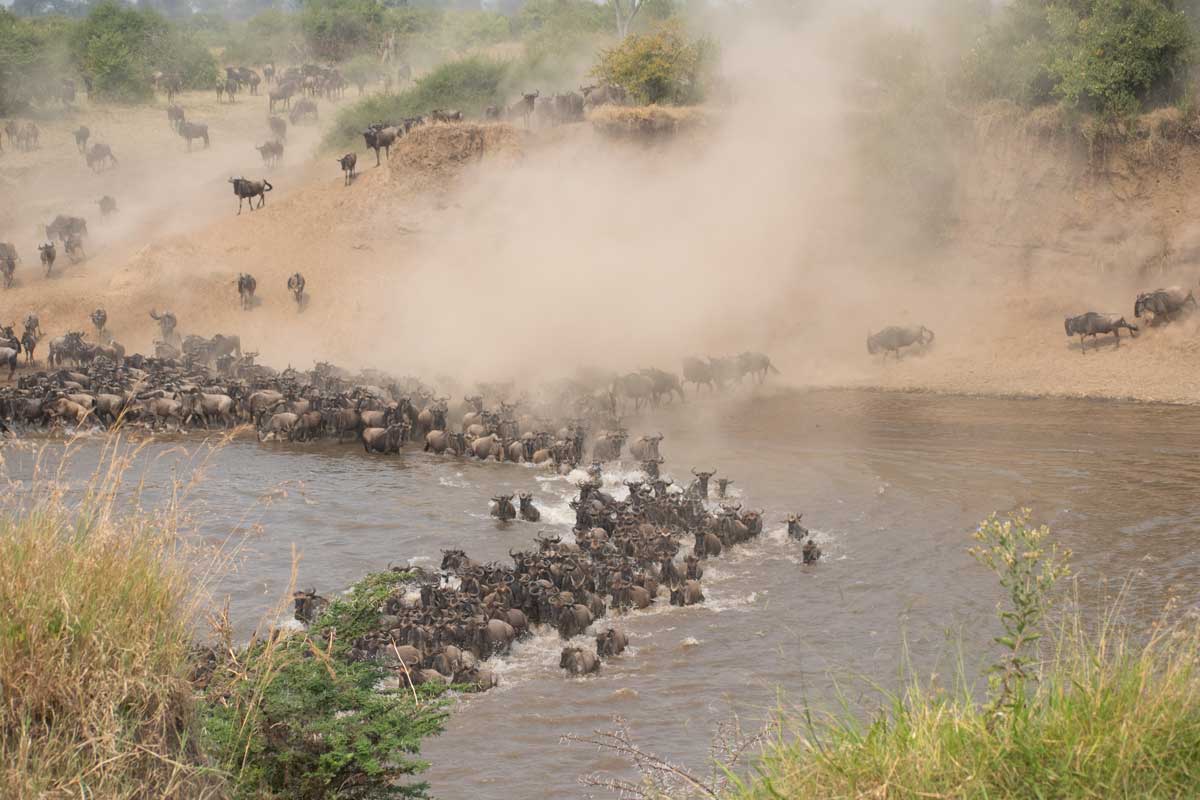
Serengeti-Mara Ecosystem
The Cycle of Life: Understanding the Great Wildlife Migration in Kenya and Tanzania
The Great Wildlife Migration in Kenya and Tanzania is a continuous, circular journey driven by the seasonal rains and the availability of fresh grazing lands. This migration covers a staggering 1,800 miles across the Serengeti National Park in Tanzania and the Maasai Mara National Reserve in Kenya.
At the heart of this movement are over 1.5 million wildebeest, joined by hundreds of thousands of zebras, gazelles, and impalas. The migration is not just a linear trek; it’s a dynamic and unpredictable sequence of events that encompasses calving, predator-prey interactions, and perilous river crossings. The migration’s cyclical nature ensures that each phase offers unique moments to observe and understand.
The journey begins in Tanzania’s southern Serengeti during the calving season (January to March). Here, thousands of wildebeest calves are born daily, providing a feast for predators such as lions, cheetahs, and hyenas. As the dry season approaches, the herds move northward, traversing the Grumeti and Mara Rivers. These river crossings are some of the most dramatic events of the migration, with crocodiles lying in wait for their unsuspecting prey.
By July to October, the herds arrive in Kenya’s Maasai Mara, where they find temporary respite in the lush grasslands. As the short rains return, they begin their journey back south, completing the cycle. The Great Wildlife Migration in Kenya and Tanzania is a perpetual dance of life and death, showcasing the resilience of nature.
Ecological Importance of the Migration
The Great Wildlife Migration in Kenya and Tanzania is more than just a tourist attraction; it’s a cornerstone of the ecosystem’s health and balance. This massive movement of animals ensures the regeneration of grasslands, as the grazing herds stimulate new growth. The migration also supports a complex web of life, sustaining predators and scavengers alike.
Predators such as lions, leopards, and cheetahs rely heavily on the abundance of prey brought by the migration. Scavengers, including vultures and hyenas, benefit from the remnants of predator kills. This intricate balance maintains the biodiversity of the Serengeti-Mara ecosystem.
Furthermore, the migration plays a significant role in seed dispersal. As the herds move across different landscapes, they carry seeds in their hooves and droppings, aiding in the propagation of plant species. The migration’s ecological impact extends beyond the immediate area, influencing the health of the entire ecosystem.
The Great Wildlife Migration in Kenya and Tanzania is also a barometer for environmental changes. Shifts in migration patterns can indicate alterations in rainfall, vegetation, and climate. Monitoring these changes provides valuable insights into the broader impacts of climate change on African ecosystems.
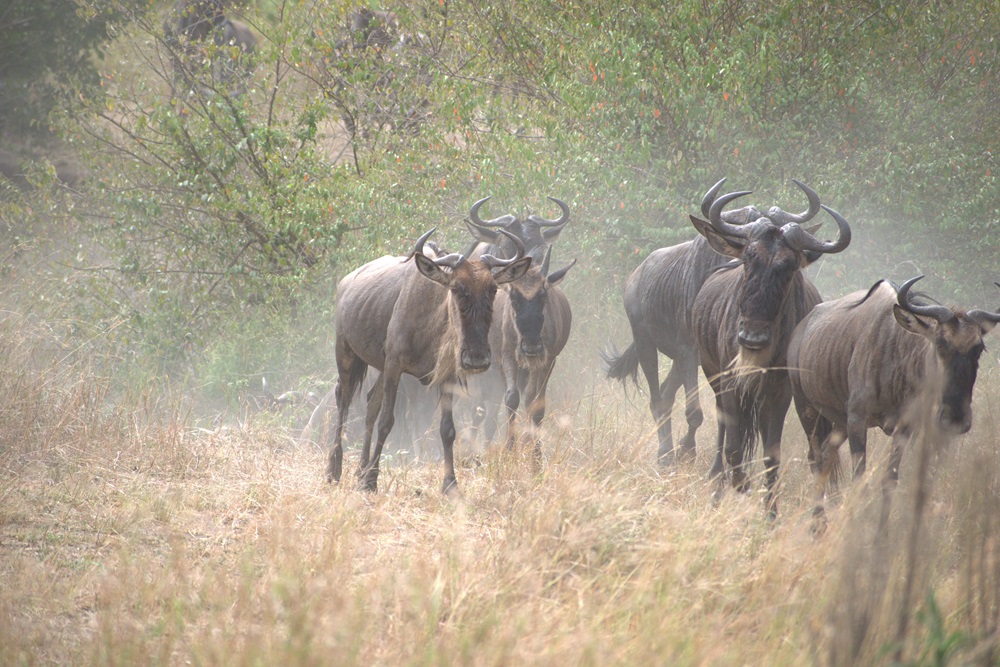
Serengeti-Mara Ecosystem
The Drama of River Crossings
One of the most iconic aspects of the Great Wildlife Migration in Kenya and Tanzania is the river crossings. These perilous moments are a test of survival, as the herds face crocodile-infested waters, strong currents, and steep riverbanks.
The Grumeti River crossing, which occurs in Tanzania, is the first major challenge for the migrating herds. The river’s wide expanse and resident Nile crocodiles make it a formidable obstacle. Despite the danger, the herds must cross to reach greener pastures.
The Mara River crossing, which takes place along the Kenya-Tanzania border, is perhaps the most famous and dramatic event of the migration. Thousands of animals plunge into the river, creating a chaotic yet mesmerizing scene. The sight of wildebeest leaping into the water, zebras braying in fear, and crocodiles snapping at their prey captures the raw intensity of the natural world.
These crossings are not only a highlight for wildlife enthusiasts but also a critical part of the migration’s survival strategy. The ability of the herds to overcome these challenges ensures the continuation of this ancient journey.
Best Times to Witness the Great Wildlife Migration
Timing is everything when planning to experience the Great Wildlife Migration in Kenya and Tanzania. While the migration is a year-round event, certain periods offer better opportunities to witness specific stages.
Calving Season (January to March)
During this time, the herds are concentrated in the southern Serengeti, where they give birth to their young. The lush grasslands provide ample nourishment for lactating mothers and newborn calves. This season is ideal for observing predator-prey interactions, as predators take advantage of the abundance of vulnerable prey.
River Crossings (June to October)
The river crossings are the most sought-after events of the migration. From June to July, the herds cross the Grumeti River in Tanzania. By August to October, they tackle the Mara River, moving into Kenya’s Maasai Mara. These months are perfect for witnessing the drama and intensity of the migration.
Return South (November to December)
As the short rains begin, the herds start their journey back to the southern Serengeti. This period offers a quieter yet equally captivating experience, with fewer crowds and a focus on the migration’s gradual progress.
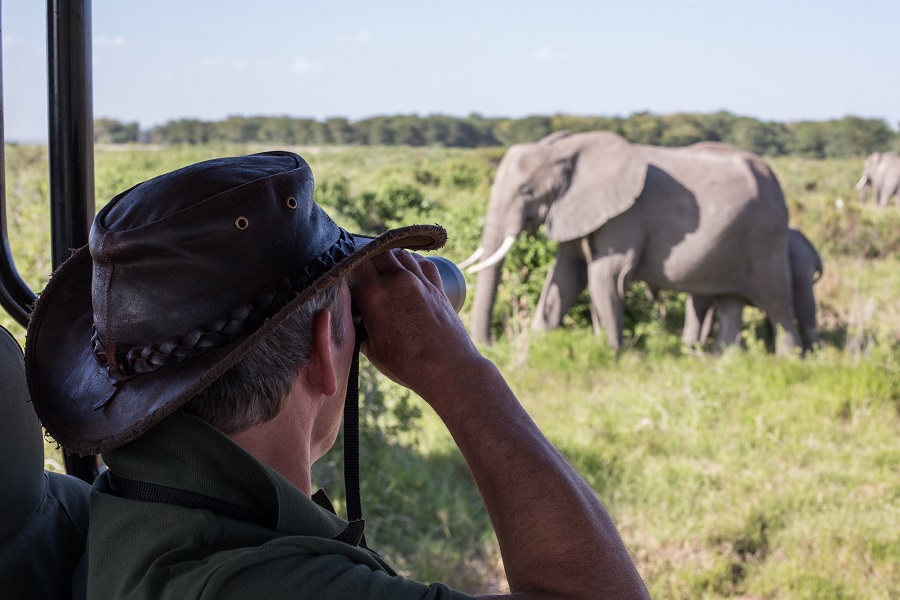
Serengeti-Mara Ecosystem
Experiencing the Migration with Africa Gorilla Wild
Africa Gorilla Wild provides expertly curated safaris to witness the Great Wildlife Migration in Kenya and Tanzania. With a focus on sustainability and authenticity, these tours ensure that travelers experience the migration’s magic while respecting the environment and local communities.
Accommodations range from luxury lodges to mobile tented camps, strategically located to maximize migration sightings. Guided game drives, hot air balloon safaris, and walking tours offer diverse ways to experience the migration. Knowledgeable guides provide in-depth insights into the behaviors and challenges of the migrating herds, enriching the overall experience.
The Role of Conservation in the Migration
The Great Wildlife Migration in Kenya and Tanzania faces several threats, including habitat loss, climate change, and poaching. Conservation efforts are essential to protect this natural wonder for future generations.
Both Kenya and Tanzania have established protected areas, such as Serengeti National Park and Maasai Mara National Reserve, to safeguard the migration’s route. These parks implement anti-poaching measures, habitat restoration projects, and community engagement initiatives to ensure the migration’s sustainability.
Tourism plays a crucial role in funding these conservation efforts. By choosing responsible tour operators like Africa Gorilla Wild, travelers contribute to the preservation of the Serengeti-Mara ecosystem.
Conclusion: Nature’s Greatest Show
The Great Wildlife Migration in Kenya and Tanzania is a testament to the resilience and beauty of the natural world. This annual journey of survival and renewal captivates the hearts of all who witness it. From the calving grounds of the Serengeti to the dramatic river crossings of the Mara, every moment of the migration tells a story of determination and interconnectedness.
With Africa Gorilla Wild, travelers can embark on a safari that not only showcases the migration’s splendor but also supports the conservation of this vital ecosystem. The Great Wildlife Migration in Kenya and Tanzania is more than just a travel experience; it’s an unforgettable celebration of life, nature, and the enduring spirit of Africa.


